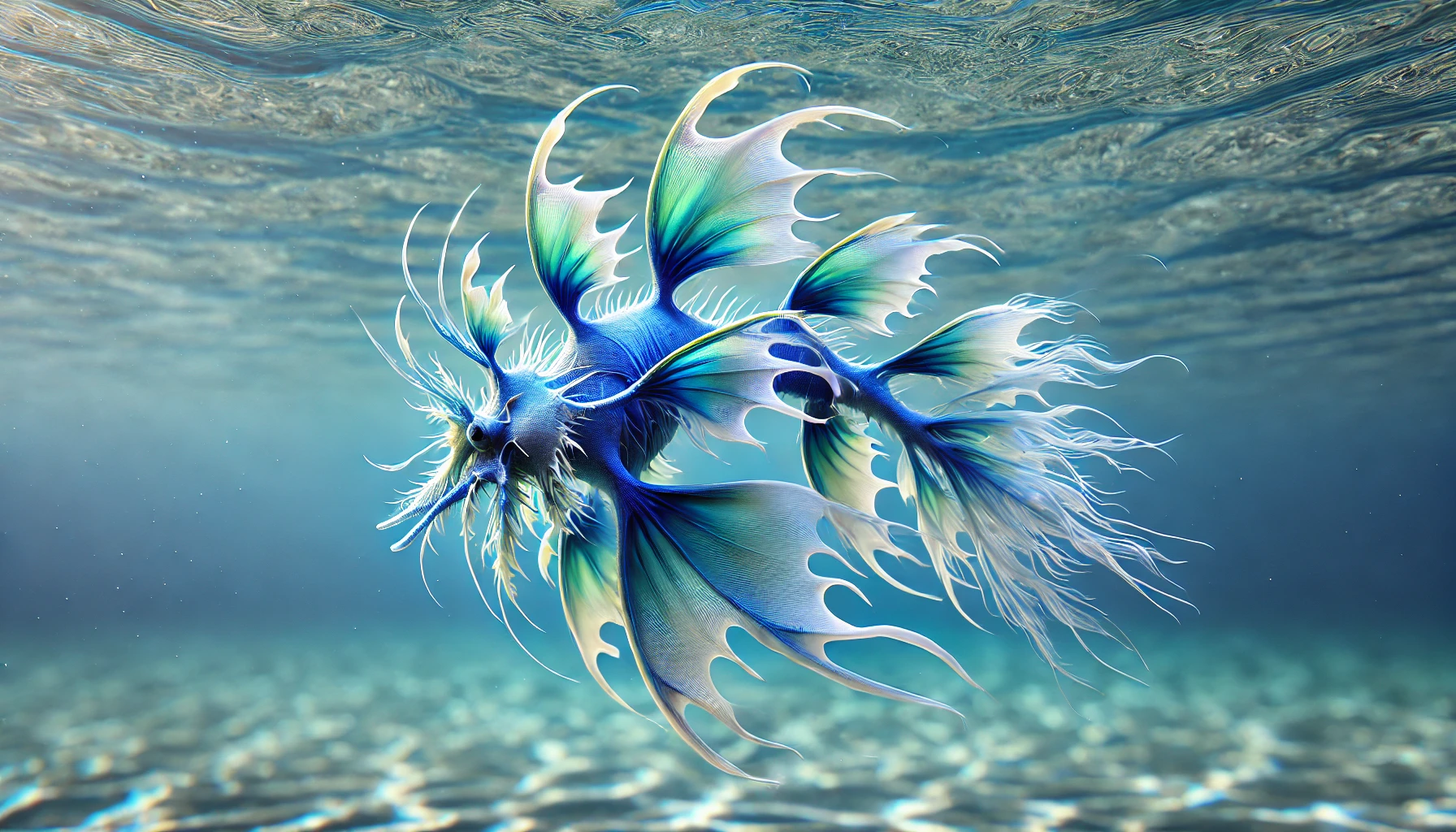The ocean is home to countless strange and wonderful creatures, but few are as enchanting and otherworldly as the Blue Dragon, or Glaucus atlanticus. This tiny marine gastropod, often called a “sea slug,” is a creature of contradictions: both beautiful and deadly, delicate yet resilient. Found floating in warm ocean currents around the world, the Blue Dragon has captured the fascination of marine enthusiasts and researchers alike. Let’s dive into the life of this extraordinary sea creature and uncover some of its most fascinating traits.
Amazing Facts About the Blue Dragon
Fact 1: It’s a STUNNING Work of Art

The Blue Dragon’s appearance is nothing short of breathtaking. Measuring only about one to three inches long, its petite size is contrasted by its striking coloration and elaborate shape. Its body is a silvery blue on the underside and a vibrant cerulean on the top, which serves as a perfect camouflage in the open ocean. The lighter underside blends seamlessly with the sky when viewed from below, while the deep blue topside mimics the ocean’s waves when seen from above.
Its body is adorned with six appendages that branch into delicate, feather-like cerata, giving it a dragon-like silhouette. These cerata not only enhance its ethereal appearance but also play a critical role in its survival, as they house stinging cells (nematocysts) harvested from its prey. The Blue Dragon is a vivid reminder of the artistic brilliance of nature’s designs.
Fact 2: It Absorbs Its Prey’s Venom
Despite its fragile and delicate appearance, the Blue Dragon is a formidable predator with an appetite for danger. Its diet consists mainly of venomous siphonophores, particularly the infamous Portuguese Man o’ War. While most animals avoid this jellyfish-like creature due to its painful sting, the Blue Dragon thrives on it. Using its toothed radula—a ribbon-like structure covered in tiny teeth—it scrapes and consumes the Man o’ War’s tentacles.
But the Blue Dragon doesn’t just eat its prey—it weaponizes it. It absorbs the venom from the Man o’ War’s stinging cells and stores them in its cerata, effectively creating a reserve of highly concentrated toxins. When threatened, the Blue Dragon can release these stinging cells to deliver a painful sting to would-be predators, making it one of the most formidable creatures of its size.
Fact 3: It Floats Upside Down
One of the Blue Dragon’s most unique adaptations is its ability to float upside down on the ocean’s surface. This is achieved through a specialized gas-filled sac in its stomach, which allows it to remain buoyant. By floating upside down, it positions its vibrant blue side toward the surface and its silvery underside facing downward, utilizing countershading as an effective camouflage technique.
The Blue Dragon is entirely at the mercy of ocean currents and winds, which means it often travels vast distances without exerting any energy. This drifting lifestyle, though passive, allows it to encounter ample prey while conserving energy. However, this also means that the Blue Dragon is susceptible to being washed ashore, especially during storms. Stranded individuals are a mesmerizing sight but should be handled with caution due to their potent sting.
Fact 4: Blue Dragons Are Hermaphrodites
Blue Dragons are hermaphrodites, meaning each individual possesses both male and female reproductive organs. When two Blue Dragons mate, they exchange sperm to fertilize each other’s eggs. These fertilized eggs are laid in long strings that float freely in the ocean, eventually hatching into tiny larvae that drift with the currents.
Despite their venomous defenses, Blue Dragons face numerous challenges in their environment, from predators to environmental changes. Their reliance on floating makes them vulnerable to shifting currents and pollution. Yet, their unique adaptations and reproductive strategies ensure that they remain a resilient and enduring part of the ocean’s ecosystems.
The Blue Dragon is a testament to the ocean’s ability to produce creatures that are as functional as they are fascinating. From its dazzling appearance to its daring feeding habits and ingenious survival strategies, Glaucus atlanticus embodies the delicate balance of beauty and danger. As we learn more about this captivating marine marvel, we are reminded of the importance of preserving the habitats that sustain such extraordinary life forms. The next time you gaze out at the ocean, consider the tiny, drifting dragons that call it home—a small but stunning reminder of the wonders beneath the waves.

